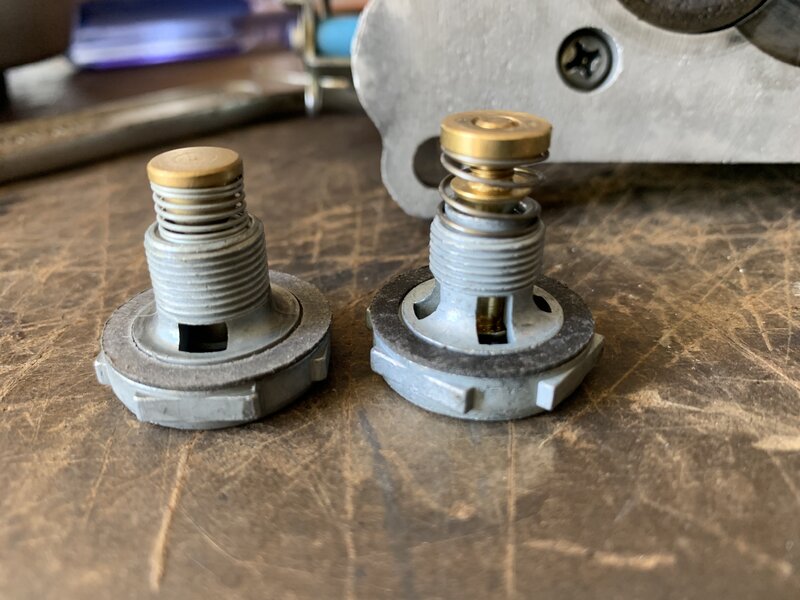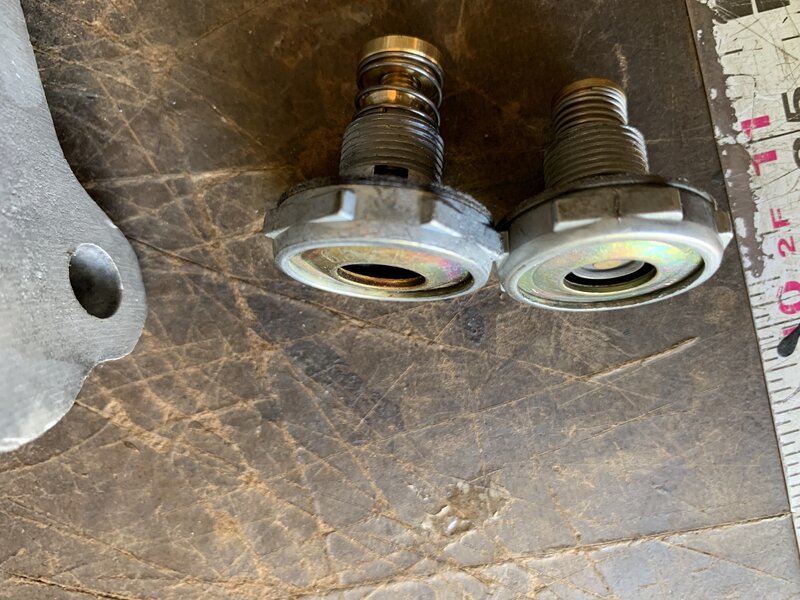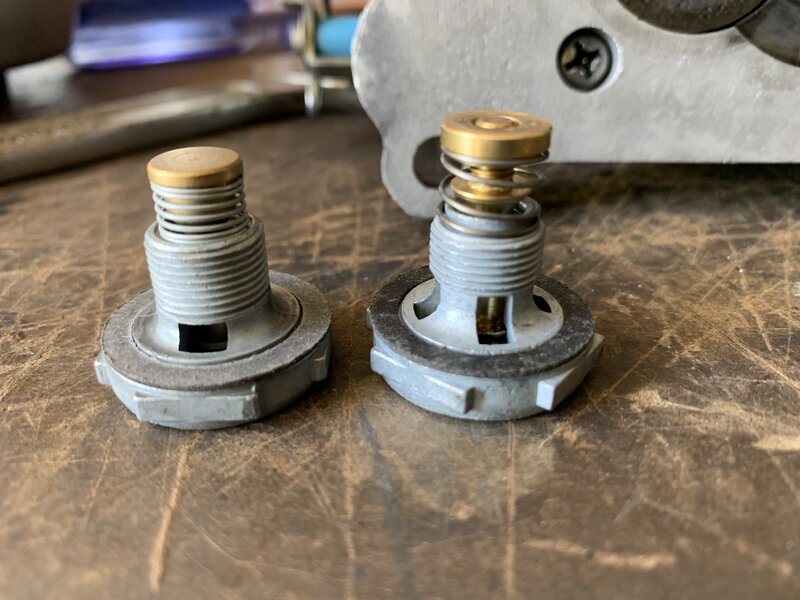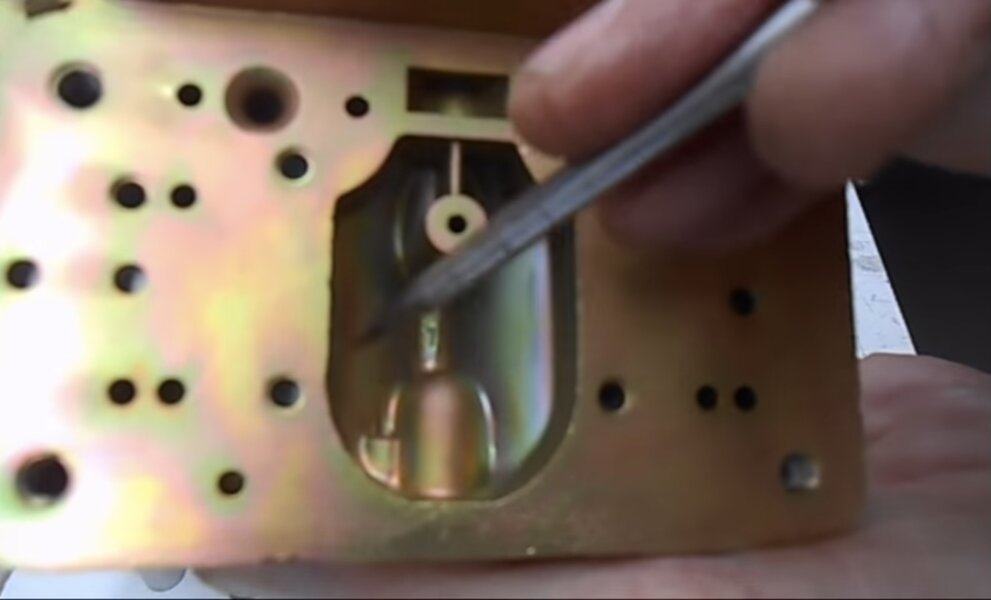Righty Tighty
Well-Known Member
The actual issue is much more complicated than the title. This is long, so bear with me.
I've been going through my 440 six pack since I bought it a couple months ago - refreshing lines/hoses, changing gaskets, etc. One day I noticed fuel dribbling out of the rear outboard boosters while the car was idling. This was a steady production of drops, not quite a stream. I checked the float level and it was a tad high, so I lowered it. The problem continued.
I figured since I had no idea how long the carbs had been sitting prior to me getting the car (although I was told it had sat for at least 10 years), that it wouldn't be a bad idea to at least open them up and freshen the gaskets, needles & seats, idle mixture screws, and clean out all the passages. Much to my surprise, the insides of the carbs looked great. I only saw one tiny piece of varnish jammed in the FRONT outboard, nothing in the rear. So I cleaned them, put em back together and back on the car. I confirmed all the throttle plates were closed, choke was already open since it's pretty warm out here. New 6.5 power valve that came with the kit (however the old one was a 7.5). Didn't change the jets, but forgot to look and see what size they were.
First attempt, the car started pretty quickly but needed lots of throttle to stay running - wouldn't idle. It was also very rich, filled my garage with dark smoke. This time, the throttle plates on the front outboard were soaked with fuel. It wasn't a float issue, because the car hadn't been running long enough to even fill the bowls.
Removed the carbs again to double-check my work. Blew out all the passages, paying special attention to the air bleeds. I also confirmed that I didn't put on any gaskets backwards, etc. Pulled the dipstick (should've done this at the get-go) and sure enough, oil smelled like gas. Changed the oil/filter.
Second attempt, same as the first.
I thought maybe the new carb to intake gaskets were incorrect, so I replaced the new with the old ones, and I also noticed that I had forgotten to screw out the idle mixture screws. So I turned them out 1.5 turns. I also installed a fuel pressure regulator due to my suspicion that the carter high performance mechanical pump might be pushing too much pressure.
Third attempt, won't start at all. I started to smell fuel, so I looked under the car and saw small puddles of gas under the open headers. Coil wire is attached, ignition is on. I have a feeling it's something very simple that I either missed or am doing wrong, or even the wrong rebuild kit was used. My carbs are original to the engine (1969), and I've read that Holley changed the center carb metering plate gasket over the years. I plan to contact Holley to see if they can help, but I thought I'd also reach out to the brain trust here as well.
I've been going through my 440 six pack since I bought it a couple months ago - refreshing lines/hoses, changing gaskets, etc. One day I noticed fuel dribbling out of the rear outboard boosters while the car was idling. This was a steady production of drops, not quite a stream. I checked the float level and it was a tad high, so I lowered it. The problem continued.
I figured since I had no idea how long the carbs had been sitting prior to me getting the car (although I was told it had sat for at least 10 years), that it wouldn't be a bad idea to at least open them up and freshen the gaskets, needles & seats, idle mixture screws, and clean out all the passages. Much to my surprise, the insides of the carbs looked great. I only saw one tiny piece of varnish jammed in the FRONT outboard, nothing in the rear. So I cleaned them, put em back together and back on the car. I confirmed all the throttle plates were closed, choke was already open since it's pretty warm out here. New 6.5 power valve that came with the kit (however the old one was a 7.5). Didn't change the jets, but forgot to look and see what size they were.
First attempt, the car started pretty quickly but needed lots of throttle to stay running - wouldn't idle. It was also very rich, filled my garage with dark smoke. This time, the throttle plates on the front outboard were soaked with fuel. It wasn't a float issue, because the car hadn't been running long enough to even fill the bowls.
Removed the carbs again to double-check my work. Blew out all the passages, paying special attention to the air bleeds. I also confirmed that I didn't put on any gaskets backwards, etc. Pulled the dipstick (should've done this at the get-go) and sure enough, oil smelled like gas. Changed the oil/filter.
Second attempt, same as the first.
I thought maybe the new carb to intake gaskets were incorrect, so I replaced the new with the old ones, and I also noticed that I had forgotten to screw out the idle mixture screws. So I turned them out 1.5 turns. I also installed a fuel pressure regulator due to my suspicion that the carter high performance mechanical pump might be pushing too much pressure.
Third attempt, won't start at all. I started to smell fuel, so I looked under the car and saw small puddles of gas under the open headers. Coil wire is attached, ignition is on. I have a feeling it's something very simple that I either missed or am doing wrong, or even the wrong rebuild kit was used. My carbs are original to the engine (1969), and I've read that Holley changed the center carb metering plate gasket over the years. I plan to contact Holley to see if they can help, but I thought I'd also reach out to the brain trust here as well.























